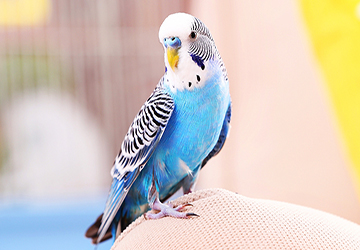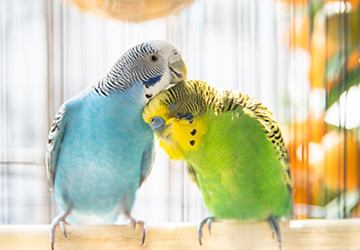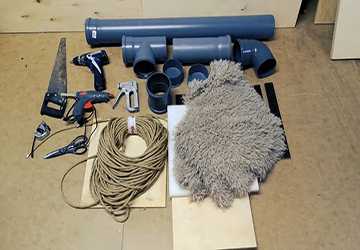How to Train Your Parrot to Talk in 3 Months
Parrots are among the most intelligent and fascinating avian species. Their ability to mimic sounds, including human speech, is unparalleled in the animal kingdom. Training a parrot to talk may be highly satisfying as a form of interaction and companionship. Here’s a comprehensive guide on how to train your parrot to speak in 3 months using proven, effective parrot training techniques.
Steps to Teach Parrot Talking
● Choose the Right Time: Parrots are more receptive to learning during specific times, like dawn and dusk. These are their most active periods, ideal for initiating training sessions.
● Start Simple: Begin with short, precise words like “hello” or “bye.” Pronounce each word distinctly, ensuring your parrot can hear the tones.
● Maintaining a Consistent Routine: Repetition is Essential in Parrot Talking Training. Say the word or phrase consistently, multiple times a day. Consistent repetition can help in registering the word in the parrot's memory.
● Positive Reinforcement: Reward your parrot with treats or affectionate petting when it tries to mimic or successfully replicate a word. Positive reinforcement strengthens the learning process.

Effective Parrot Training Techniques
● One-on-One Interaction: Engage in direct, face-to-face interactions. This undivided attention helps you better concentrate and reinforces the bond between you and your parrot.
● Use Flashcards: Visual aids can be a beneficial supplement. For instance, if you're teaching the word “apple,” show an apple or a picture of one while repeating the word.
● React to Unprompted Speech: If your parrot says something without being prompted, acknowledge it. Reacting to their independent efforts encourages them to speak more.
Quick Methods to Train Talking Birds
● Tape Recording: Use recordings of the words or phrases you're trying to teach. Playing them during the day, even when you're not around, can be a supplementary training method.
● Engage with Technology: Several apps and videos are designed explicitly as quick methods to train talking birds. They employ repetition and visual cues to aid in the learning process.
● Social Interaction: Parrots learn faster in social settings. If you have more than one bird, train them together. Often, they'll mimic each other, accelerating the learning process.
Enhancing Your Parrot's Vocabulary
● Introduce New Words Gradually: Once your parrot has mastered a few essential words, introduce more complex words or phrases. Remember, consistency and repetition are vital.
● Include Songs and Melodies: Parrots aren’t just limited to words. Many parrots enjoy mimicking tunes. Simple melodies can be a fun way of enhancing your parrot's vocabulary.
● Practice Conversations: Initiate mini-conversations as your parrot becomes more adept at speaking. This not only enhances vocabulary but also aids in context understanding.
Understanding Your Parrot's Breed
Different breeds of parrots have varying capabilities when it comes to mimicking human speech. African Greys, for example, are renowned for their incredible vocabulary and clarity. On the other hand, some breeds, like the Macaw, might have a lesser propensity for extensive language but can still learn critical phrases. It's essential to:
● Research Your Breed: Understand the vocal potential of your parrot’s breed. This will set realistic expectations and provide insight into the kind of words or sounds they are most likely to mimic.
● Adjust Techniques Accordingly: Some breeds may respond better to visual cues, while others prefer auditory stimuli. Tailoring your approach based on the species can enhance effectiveness.
Creating a Conducive Environment
The environment plays a pivotal role in the learning process of parrots:
● Limit Distractions: Ensure the training area is free from loud noises, other pets, or disturbances. This allows the parrot to focus solely on the training.
● Comfortable Setting: Ensure the cage or perch is comfortable, neither too hot nor too cold. A contented parrot is more likely to engage in learning.
Building Trust and Emotional Bond
● Spend Quality Time: Beyond the specific training sessions, spend quality time with your parrot. Play with them, talk to them, and let them get accustomed to your voice.
● Handle with Care: Physical interactions, like gentle petting or allowing them to perch on your finger or shoulder, reinforce trust. The stronger the bond, the more enthusiastic and responsive the parrot will be during training.

Advanced Techniques and Challenges
● Phrase Association: Associating phrases with actions can be a stimulating challenge. For instance, teaching your parrot to say "Good morning" when the sun rises or "Time for bed" when it sets.
● Correcting Mistakes: If your parrot picks up an undesirable word or sound, it's crucial to fix it immediately. Avoid reacting or laughing at incorrect words, which can inadvertently reinforce the behavior.
● Continuous Learning: Even after achieving your 3-month goal, continue engaging with your parrot and introducing new words and sounds. This keeps their mind stimulated and reinforces the learning.
Understanding Your Parrot's Breed
Different breeds of parrots have varying capabilities when it comes to mimicking human speech. African Greys, for example, are renowned for their incredible vocabulary and clarity. On the other hand, some breeds, like the Macaw, might have a lesser propensity for extensive language but can still learn critical phrases. It's essential to:
● Research Your Breed: Understand the vocal potential of your parrot’s breed. This will set realistic expectations and provide insight into the kind of words or sounds they are most likely to mimic.
● Adjust Techniques Accordingly: Some breeds may respond better to visual cues, while others prefer auditory stimuli. Tailoring your approach based on the species can enhance effectiveness.
Creating a Conducive Environment
The environment plays a pivotal role in the learning process of parrots:
● Limit Distractions: Ensure the training area is free from loud noises, other pets, or disturbances. This allows the parrot to focus solely on the training.
● Comfortable Setting: Ensure the cage or perch is comfortable, neither too hot nor too cold. A contented parrot is more likely to engage in learning.
Building Trust and Emotional Bond
● Spend Quality Time: Beyond the specific training sessions, spend quality time with your parrot. Play with them, talk to them, and let them get accustomed to your voice.
● Handle with Care: Physical interactions, like gentle petting or allowing them to perch on your finger or shoulder, reinforce trust. The stronger the bond, the more enthusiastic and responsive the parrot will be during training.
In conclusion, training your parrot to talk combines consistency, positive reinforcement, and leveraging the proper techniques. While the journey might be filled with repeated phrases and lots of treats, the result – having a talking parrot – is incredibly fulfilling. Remember, every parrot is unique; while some might pick up words within weeks, others might take longer. Patience and the effective parrot training techniques mentioned above will undoubtedly yield positive results.




